The Redmi 3S boasts of a fantastic built quality, brilliant battery back up, and a pretty good display, says Himanshu Juneja
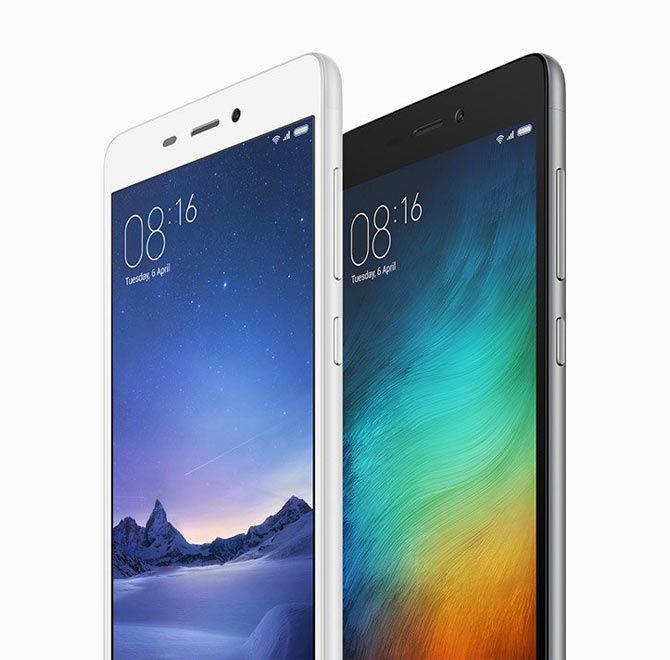
Ever since the launch of Redmi 1S, Xiaomi, the company dubbed as 'Apple Of China', has been enjoying a dream run in India. The brand name is now concurrent with devices which are cost effective, yet provide feature rich options.
Xiaomi recently launched two variations of its new handset: Redmi 3S. Both the handsets belong to the sub Rs 10,000 price bracket, and clearly, Xiaomi is looking to get more proactive in the budget category. Both the handsets have slight variations, allowing buyers to decide according to their pocket.
Will the handset, armed with a premium built and big battery pack, be able to grab the top honours in one of the hotly contested segment? Will the inclusion of feature like VoLTE in a budget category make the users sit up and take notice?
We take a close look to find out the answers.
Construction
Xiaomi really has pushed the bar here by providing a metal unibody design on the Redmi 3S. A phone with flagship premium looks in a budget segment, the prospective buyers can ill afford to ignore this new standard being ushered in.
The phone measures 139.3 x 69.6 x 8.5 mm in dimension, and weighs 144 gms. The phone is not exactly thin, but the slightly curved back should not make the users complain much. The metal body with rounded corners mean that the curved design allows for a comfortable grip to be established quickly.
Taking stock of the front side, the phone looks a lot like the famed Redmi Note 3. The bezels have been kept minimal, and the screen sits a bit deep in the well. This should assist in protecting the panel whenever placed on flat surfaces. There are the three standard buttons just beneath the LCD screen.
Speaking of the buttons, the right edge of the handset has the volume rocker and the power key, whereas the hybrid dual SIM tray is located on the left edge. The 3.5 mm audio jack and the Infra Red emitter are placed on the top edge, while the microUSB port is on the bottom edge.
Turn the phone over, and the matte finish rear panel has the camera unit and the finger print scanner as the notable components. There is also the speaker grill towards the lower back which may get muffled if the phone is left carelessly.
Overall, the Redmi 3S comes with a solid and a premium built quality. To offer something like this in the budget category is a special feat, and other phone manufacturers will have to come up with something really special to out manoeuvre Xiaomi from now on.
Display
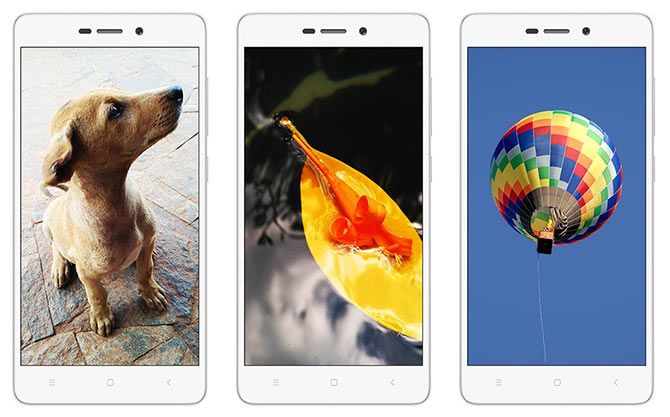
The 5-inch IPS LCD panel is definitely a sight for sore eyes. The screen may not be full HD, but the 720x1280p resolution makes sure that the 294 ppi pixel density brings up crisp results.
The screen is bright enough to be viewed under direct sunlight. However, the missing Sunlight Display technology of Xiaomi would have further enhanced the display here. The viewing angles are impressive, with the colours being natural than overtly saturated.
Users get the advantage of choosing between Standard, Increased and Automatic viewing modes. There is also the reading mode to help the users deal with the stress experienced during the late night sessions.
Specs
The Redmi 3S comes in two flavours, but the core configuration remains the same. There is the Octa Core Snapdragon 430 SoC, which has Cortex A53 chugging along at 1.4 Ghz of speed. The graphics are handled by Adreno 505 GPU.
The Prime version comes sporting 32 GB of internal storage, and 3 GB of RAM, whereas the regular Xiaomi Redmi 3S comes with 16 GB of storage space, and 2 GB of RAM. Also, the latter loses out on the fingerprint scanner too.
Thankfully, both the smartphones come with support for memory card, and can have further storage space worth 256 GB.
Connectivity
The handset is stacked up well with the modern standards. There is the 4G LTE connectivity, and so is the VoLTE as well. Xiaomi did well to cash in on the VoLTE craze that is going around. While the primary SIM will allow for the 4G connectivity, the secondary SIM will be 3G enabled only. The users will have to choose from either the secondary SIM or the microSD card.
Apart from these, there is Wi-Fi (802.11 b/g/n), Bluetooth, and GPS feature. The inclusion of Infra Red emitter should make some users feel interested enough to attempt doing away with multiple remotes.
A big boost is provided by the inclusion of the FM radio here.
Operating system
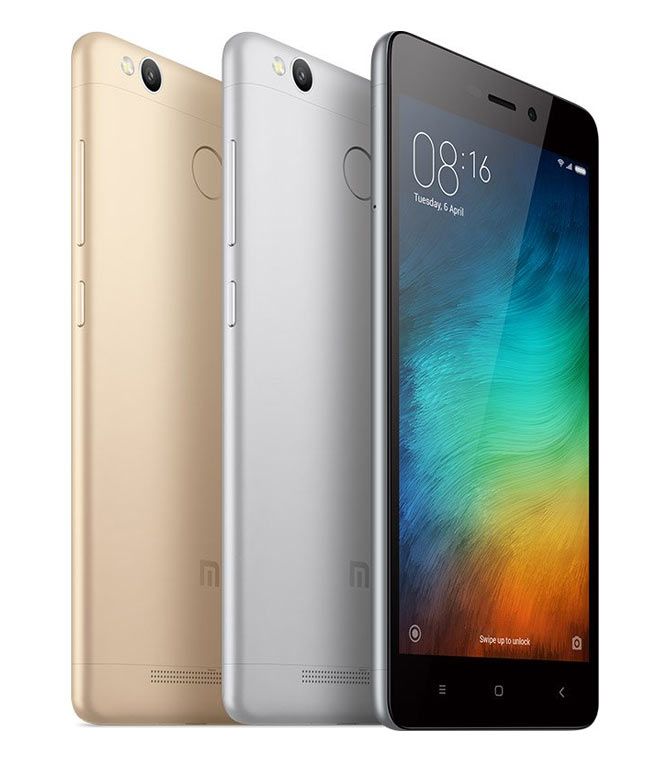
The Redmi 3S comes with Xiaomi's MIUI (ver 7.5) as its propriety skin, with Android Marshmallow (ver 6.0) as its underlying operating system.
There is no app drawer, as the app icons are placed on the multiple screens in Apple's iOS style. There is support for themes, and the theme centre has a good repository in place. There are some preloaded apps, like WPS office, Amazon Kindle app and shopping apps like Amazon and Flipkart. There is also the resource hog in the form of Facebook app, which we recommend to uninstall.
It was a pleasant surprise to notice that Xiaomi's premium handset OS feature Quick Ball was present in this budget handset. This is again iOS styled blob that can be placed anywhere on the screen for summoning the quick settings.
There are other modes present onboard, like the Guest mode, and the Child mode. While these two are helpful in restricting the app access, the Lite mode is another good feature that allows for the elderlies a more easier working environment. The one handed mode has been included as well.
Xiaomi has tried to pep up the stock Android OS a bit, but has not been able to get everything in place. The Google Now on tap is missing. The option to reply from the message notification, which requires two finger touch is a bit wonky. Thankfully, MIUI 8 update is in the works, and these quirks should be attended to.
Otherwise, with features like Mi Drop, which is Wi-Fi direct based sharing and IR blaster utilising remote control app, Xiaomi has tried to get some useful apps for the consumer. More apps can be purchased via Mi Store.
Performance
Any doubts about Xiaomi's latest budget phone performance were put to rest as soon as it was made to hit the road. The apps launched without any lags, and same was the case while switching between them. The fingerprint scanner too unlocked the handset swiftly, without leaving too much room for any complaints.
The gaming experience was better than expected. The graphic heavy games like Asphalt 8 played out smoothly, but there were instances of frame rate getting dropped. This was expected. The less intensive games went about without breaking a sweat. The accompanying sound was pretty good, but the speaker exhibited their limitations when cranked right up to the maximum volume levels. Still not a deal breaker. The pleasant sound output through the headphones was reassuring.
Heating was kept well in check. The intensive gaming session did make the handset a bit hot, but not to the levels to make the user duck for cover.
Camera
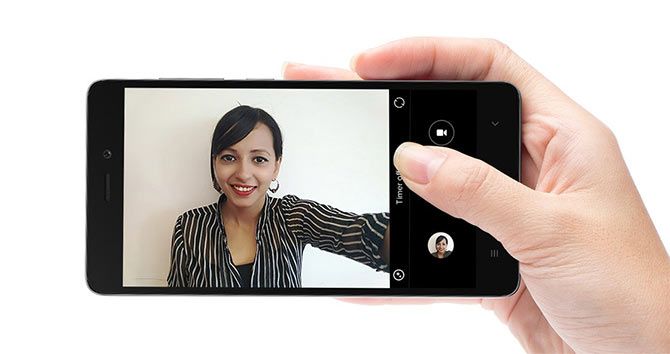
The handset comes with 13 MP rear shooter, which has an f/2.0 aperture, Phase Detection AutoFocus (PDAF), and LED flash. The front facing camera is a 5 MP unit.
The camera took pretty detailed images with adequate lighting. The shots looked impressive, but zooming in revealed the pictures to have been a little smoothened out. Considering the budget, the result was not disappointing at all. Pictures taken during dusk allowed for more noise to creep in, which was expected. HDR mode came to the rescue to certain extent.
The handset is capable of grabbing 1080p videos. The result again were pretty acceptable with good light conditions. Samples collected with darker surroundings got murkier. Users get to grab videos in Panorama and Time shift modes.
Xiaomi has included a Manual mode, allowing access to setting like ISO, and White balance. One can access the different shooting modes with a left swipe, whereas the filters can be accessed by swiping towards the right.
The front facing camera clicked decent selfies. The beauty mode allowed for touching up the pics if the need arose.
Battery
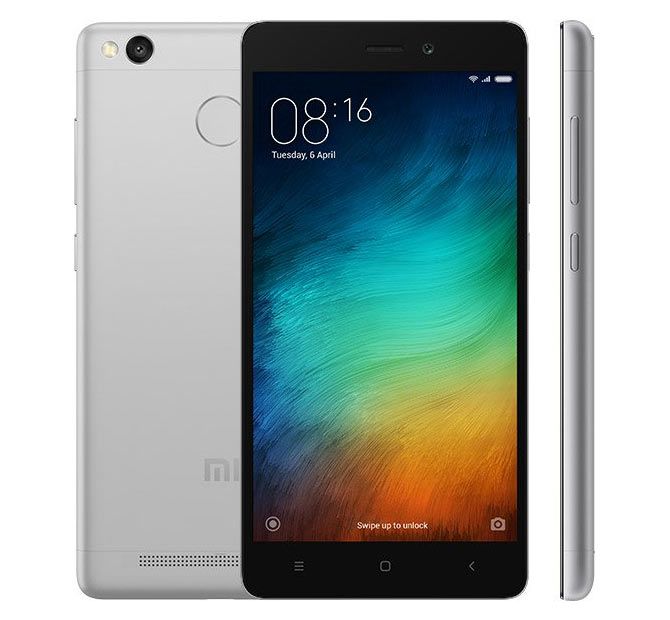
The 4100mAh battery is one of the strongest point of the Redmi 3S. The massive battery pack on a 5-inch, 720p display sounded promising right from the word go.
Sure enough, the users can look forward to a day's worth of back up even on heavy usage pattern. For those with moderate usage ways, they can even witness the phone lasting about two days on a single charge. When it comes to charging, the phone gets juiced up from zero to hundred per cent in about two hours flat.
Verdict
With the Redmi 3S Prime retailing for Rs 8,999 (3GB + 32GB/fingerprint sensor), and its humbler sibling priced at a mere Rs 6,999 (2GB + 16GB/without fingerprint sensor), Xiaomi indeed has brought forward an awesome option, especially for those who prefer a regular sized handset.
The phone is not without its niggles, but they are far and few. The OS updates should solve a good chunk of the quirks, while the camera performance in testing conditions is understandable. Keeping these aside, the Redmi 3S boasts of a fantastic built quality, brilliant battery back up, and a pretty good display.
With the Redmi Note 3 retailing for Rs 9,999, the users have their task cut out. The good news is that these are compelling options available now for the consumer, and Xiaomi has a firm presence in one of the most hotly contested segment.










